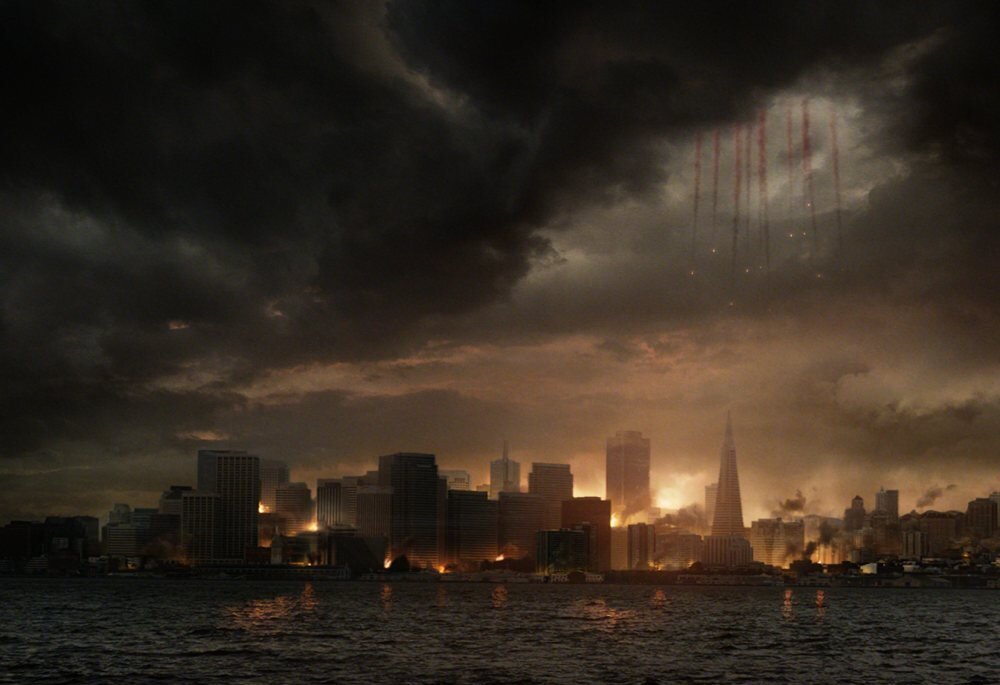Godzilla
After the success of his first feature film (Monsters), which saw an alien invasion throughout the American border, Gareth Edwards is back with a bigger budget, and an even bigger monster.
Since the 1954 version, the big screen has seen numerous adaptations of the giant Japanese monster, and since then, the story hasn’t changed much: Godzilla is still cruising around town feeding off of the planet’s radiation, while the rest of the world, including scientists Brian Cranston, Sally Hawkins, and Ken Watanabe, try to figure out a way to tame the beast, and a couple of other Massive Unidentified Terrestrial Organisms (M.U.T.O.s).
With a budget that eclipses that of Monsters ($160 million compared to a modest $200,000), this film only feels slightly more cinematic than Edwards’ first. This is not to say that it wasn’t money well spent; on the contrary, it actually feels very much like a Gareth Edwards movie, which is quite an achievement considering it’s only his second film.
What impressed me the most in Monsters was the cinematography and how a landscape could look so beautiful in ruins. As an ex-Cat once wrote of Monsters, “he’s made something that looks like what a National Geographic alien invasion film might look like.” And the same is true here. This is a battlefield I’d visit if it existed. While buildings tumble, humans scramble to safety, and creatures fight in the night sky, Edwards’ camera remains calm and graceful in order to capture the perfect mood. He does, however, appear to want to knock Hans Zimmer off his podium with an overly dramatic score at times, but sound is muted where it’s really necessary, and he lets the M.U.T.O.s do the talking – and some more dancing. He really does seem to be in his comfort zone here.
Less successful, however, is his character development. Still riding high from his Breaking Bad days (and perhaps, like Edwards, still not wanting to put down the boiler suits and gas masks just yet), Cranston provides great, reminiscent entertainment for a while (accompanied by on-screen wife Juliette Binoche), but as soon as the parents leave the party and leave the kids (son Ford, played by Aaron Taylor-Johnson, and his wife, played by Elizabeth Olsen) to their own devices, one starts to feel like Cranston or Binoche should have left with them, as these two young stars fare less well on their own.
Taylor-Johnson brings the blue eyes and the beef (he’s been working out!), but, sadly, his presence doesn’t command that much attention, and his character isn’t all that interesting. Equally, Olsen, who is a Fohnhouse favourite, has left the indie road and crossed over to the big-budget highway with an underdeveloped, stereotypical mother/nurse role. This wouldn’t be too bad if Edwards had decided to spend more time on the striking creatures he has created (the movie is called Godzilla after all), but instead he has gone for a human-character driven story, when the humans in the main act have little to offer.
Fortunately, though, all the action does build up to a worthy fight sequence between M.U.T.O.s, but, if not for these scenes, this would have been a disaster movie with no titular God-like creature in sight, as Godzilla spends an awful lot of time with his head buried in the ocean (maybe he’s camera shy!). Thankfully, though, as I said, the movie does redeem itself by the end, and we’re left with an enjoyable blockbuster, teaching us not to mess with the natural order, and to just let nature do its thing. Like that’s ever going to happen!
3.5/5


